Crime Scene Investigations
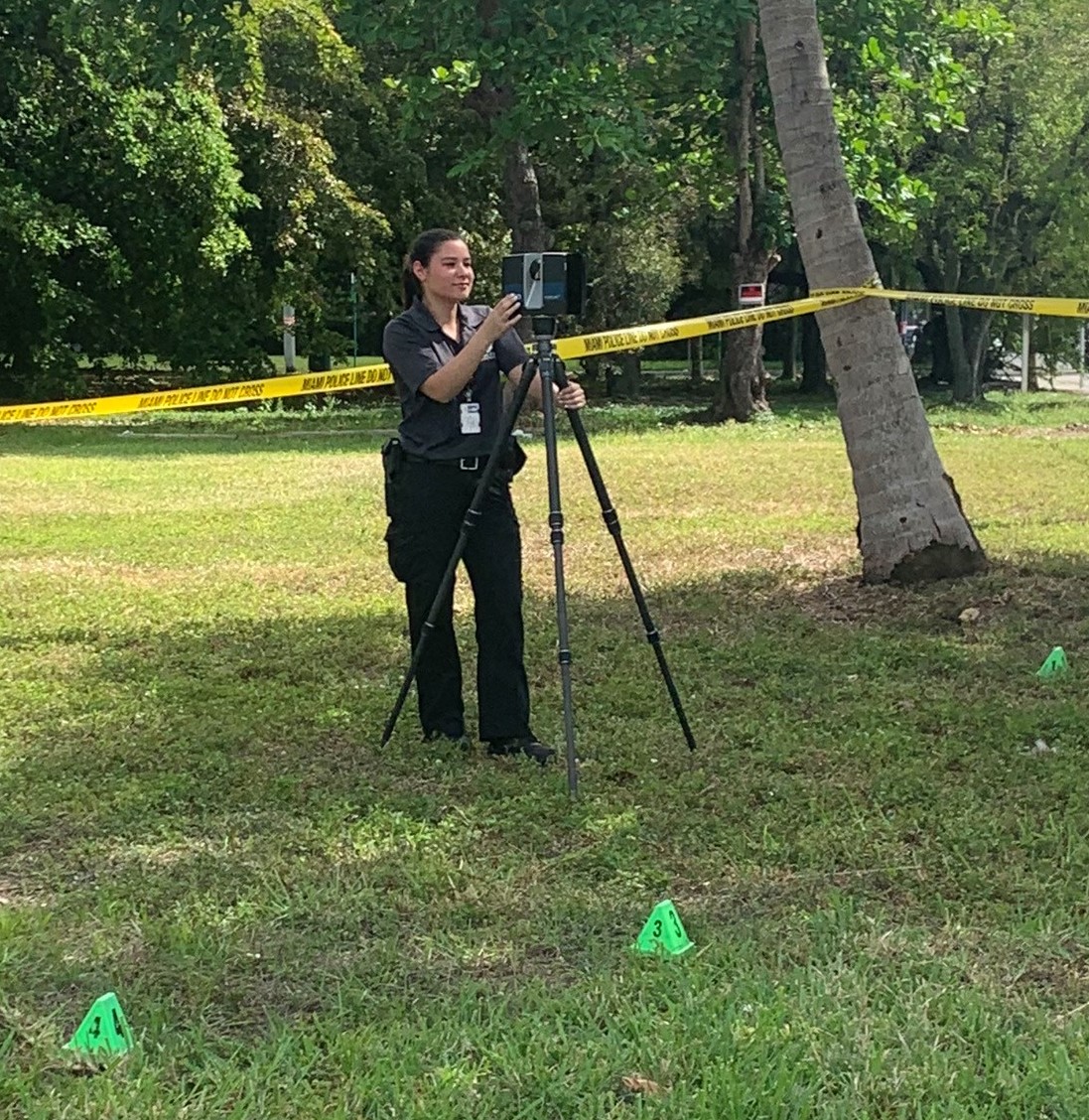
The City of Miami Police Department utilizes the various disciplines of the forensic sciences in order to conduct Crime Scene Investigations and
aid in the prosecution of criminal cases.
The Crime Scene Investigation Unit is an element of the Criminal Investigation Division's Investigative Support Section, and is comprised of two sub Units:
A Crime Scene Unit and a Technical Services Unit.
The Crime Scene Investigation Unit, the real "Miami CSI", is comprised of civilian Crime Scene Investigators (CSIs) and is on call to support criminal
investigation activities throughout the City of Miami 24 hours a day and 7 days a week. Whenever a crime occurs in the City of Miami. police officers or
investigators arrive at a crime scene, secure
the scene and make an assessment, and if the situation requires further forensic investigative support, they request the services of the Crime Scene Investigation Unit.
The Unit's CSI staff are an extremely talented cadre, qualified to handle any and all types of crimes; either conducting their analysis on their own or as part of
an investigative team. They are extraordinarily skilled in photography, DNA & evidence collection, fingerprint processing, crime scene digital 3D laser scanning,
and and the ability to offer expert testimony in criminal court proceedings. Much of the work conducted by these professionals is absolutely critical in determining
the guilt or innocence of the individuals under investigation. Once collected and analyzed, the evidence gathered at crime scenes tells the story of how the crime evolved.
The career path for a Crime Scene Investigator includes a formal educational curriculum of either Criminal Justice, Criminology, Physical Science, or coursework in the
Natural Sciences. Several colleges and universities are also offering courses tailored to crime scene technology, which addresses the field work aspect of the profession.
The Crime Scene Investigator frequently operates in extremely harsh conditions and is often exposed to very gruesome crime scenes. At times, the work is quite strenuous
and the successful CSI must be both mentally and physically capable of overcoming the stress that is routine part of the profession.
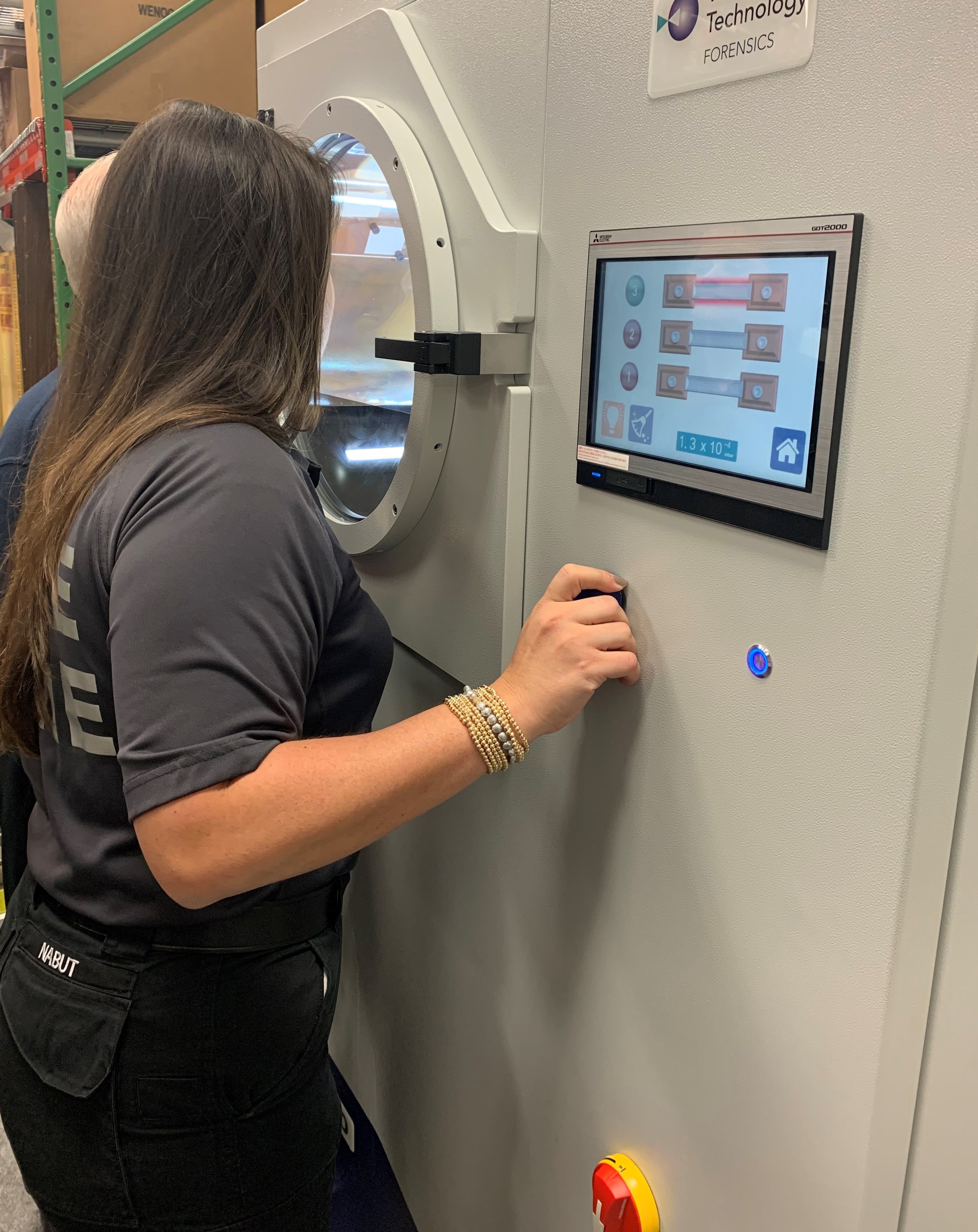 CSI Miami CSI Miami
CRIME SCENE INVESTIGATIONS - MIAMI
On the popular television show, CSI Miami, the savvy crime scene investigators are uncanny at discovering and collecting the most minute and
inane pieces of evidence. Working in a state of the art facility with the most modern equipment and unlimited resources, they skillfully examine the evidence and
are always able to determine the guilty party.
Even though it doesn’t work quite that way in actuality, the real CSI Miami, the Crime Scene Investigations Unit of the Miami Police Department, utilizes various
disciplines of the forensic sciences to conduct crime scene investigations and aid in the prosecution of criminal cases.
The Miami Police Department’s Crime Scene Investigations (CSI) Unit is comprised entirely of civilian employees. The unit has 25 Crime Scene Investigators, 4 Shift Supervisors, 1 Photo Lab Supervisor,
1 Latent Print Supervisor, 1 Unit Supervisor & a Unit Commander. Crime Scene Investigators possess a wealth of knowledge and experience. These professionals are well-trained and versed in crime scene investigations.
The CSIs handle all types of crime scenes, either individually or as a team. Processing crime scenes includes fingerprinting, photography, DNA & evidence collection, crime scene 3D laser scanning,
and providing critical testimony in criminal court proceedings. The Miami Police Department’s CSI Unit also assists various local, state, and federal agencies in their investigations.
Much of the work conducted by these individuals aids the police department in determining the guilt or innocence of those under investigation. The evidence collected at a crime scene
helps investigators recreate what occurred and either supports or refutes statements, confessions and/or the beliefs of the general public.
The CSI Unit has 8 trucks and 2 Mobile Crime Scene Laboratories. The trucks are outfitted with equipment required to process general crime scenes. The state-of-the-art Mobile Crime Lab is utilized to respond
to more complex crime scenes. It is self sufficient and fully equipped with video equipment, high intensity exterior lighting and electrical capabilities as well as
specialized equipment to examine and process evidence in the field.
The Miami Police Department’s CSI Unit also has a Technical Services Unit. This unit includes the Latent Print Detail, the Photo Lab Detail, and the Employee Identification Detail.
The Latent Print Detail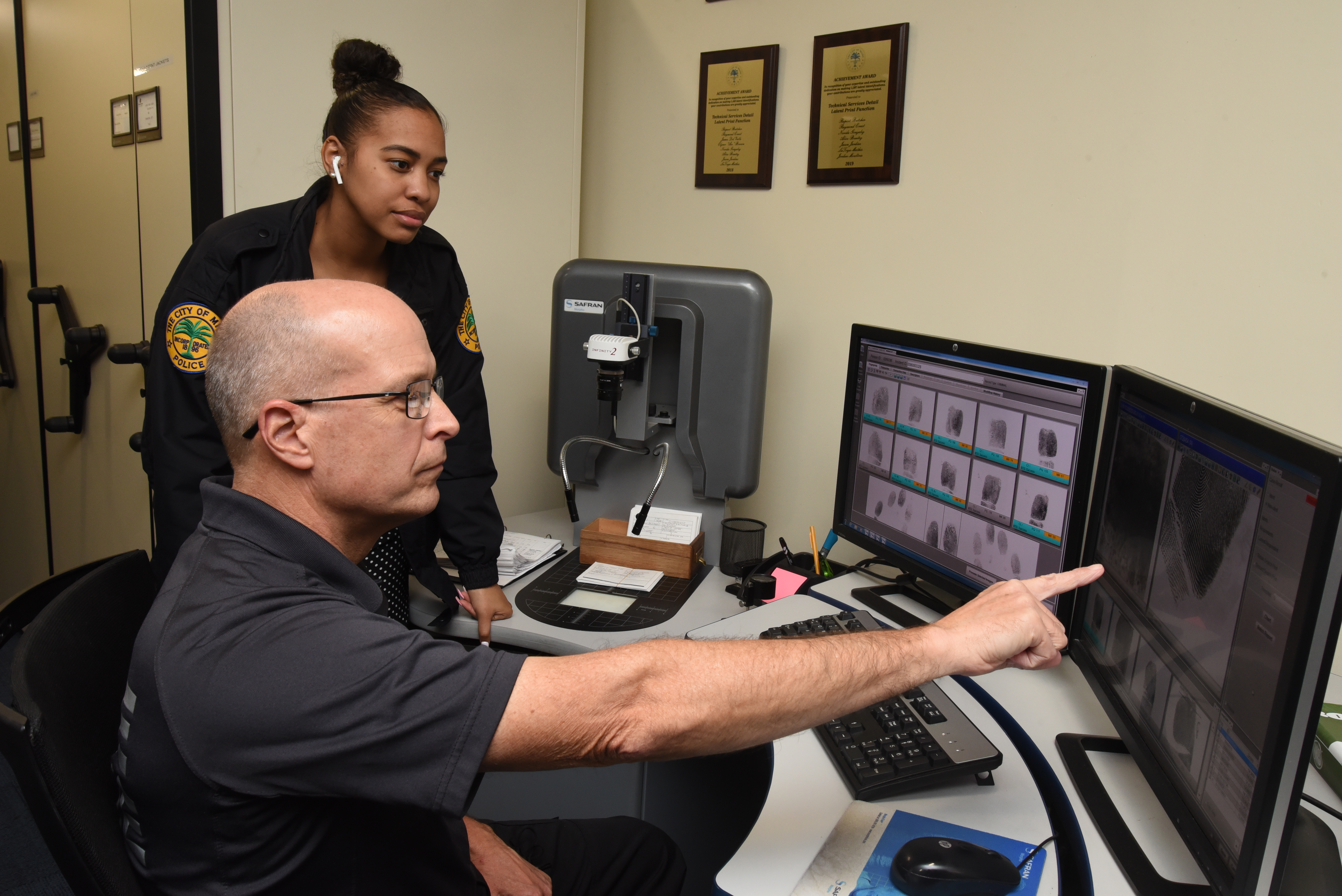
The Latent Print Examiners are highly specialized individuals who examine latent (unknown) fingerprints from crime scenes and attempt to match them to known individuals fingerprints,
from the local, statewide & FBI databases. Using an Automated Fingerprint Identification System (AFIS), the examiners are able to search a greater number of latent fingerprints from crime scenes much faster
than they could manually. The Miami Police Department purchased this equipment in the 1980’s, making it the first agency in the United States to have this valuable tool. Shortly after the AFIS’s purchase,
it was instrumental in solving the murder of Miami Police Officer Nathaniel Broom. Within 45 minutes of the vehicle being processed for latent fingerprints, a recovered print was entered into the AFIS system.
Subsequently, the suspect was identified and subsequently arrested for Officer Broom’s murder. A more recent acquisition is the “CASE AFIS” system. This software system allows the Latent Print examiner to
simultaneously compare multiple print standards of known individuals directly to fingerprints lifted from the crime scenes. This process minimizes the abundance of time the Latent Print Examiner must
spend manually comparing each set of 10 standard prints to a single scene fingerprint..
With the use of the AFIS and “CASE AFIS” software, the latent print examiners can efficiently identify subjects whose latent fingerprints were recovered at crime scenes. Once they make a match, and verification is made
by another experienced latent examiner, a report is issued to a detective who will follow up in order to determine whether the person identified has a legitimate reason for leaving his/her fingerprints on the crime scene,
or is possibly the perpetrator. Through the investigation, an arrest can be made based on fingerprint evidence alone, which is normally called the “silent witness.”
The Photo Lab Detail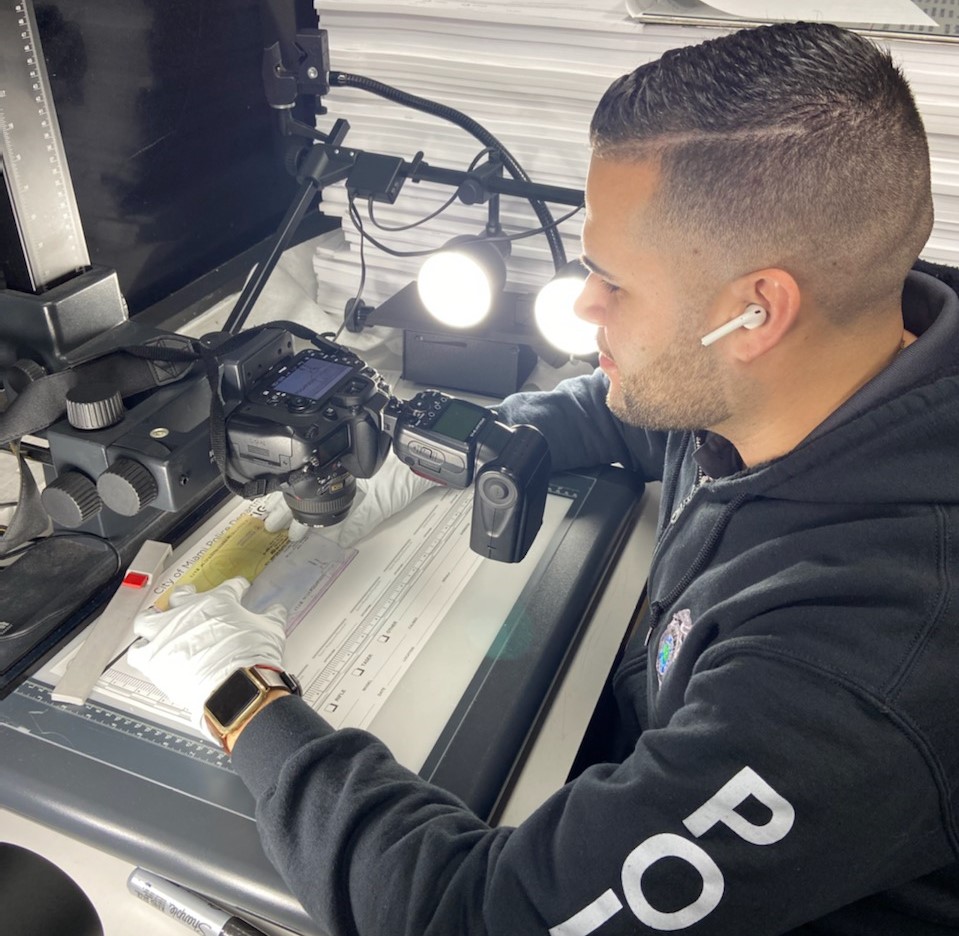
This detail provides photographic services to the Crime Scene Unit as well as the Department. They are responsible for digital photo storage, photo printing and archiving of photo negatives related
to old crime scenes. In addition, this detail provides digital photo copies to private attorneys, the Public Defenders Office and the State Attorneys Office.
Originally, the CSIs processed photo negatives manually. The old cameras were large and
the development and printing of the 4” x 5” negatives was performed by hand in total darkness. The CSIs had to manually mix the solutions, bathe the negatives, then dry and print their photographs.
The 1970s brought automation into the detail with the use of a Kreonite color film processor and printer and the use of smaller negatives on roll film. Although a lot of manual labor was still involved in the processing, the machine performed most of the work in a lighted work area. The 1980s and 90s further brought more new developments in that fully
automated mini-lab systems were now employed in the processing and printing of much smaller 35 mm color film.
Digital photography arrived in the millennium. In 2010, the Photo Lab Detail acquired a new state-of-the-art digital photo lab.
Currently, all of the photographs taken at crime scenes are taken with professional quality digital cameras. Crime Scene images are uploaded and stored on a computer server, where they can be remotely viewed by internal investigative detectives. Crime Scene photographic files are always preserved and currently date back to crimes from the early 1960s.
Employee Identification Detail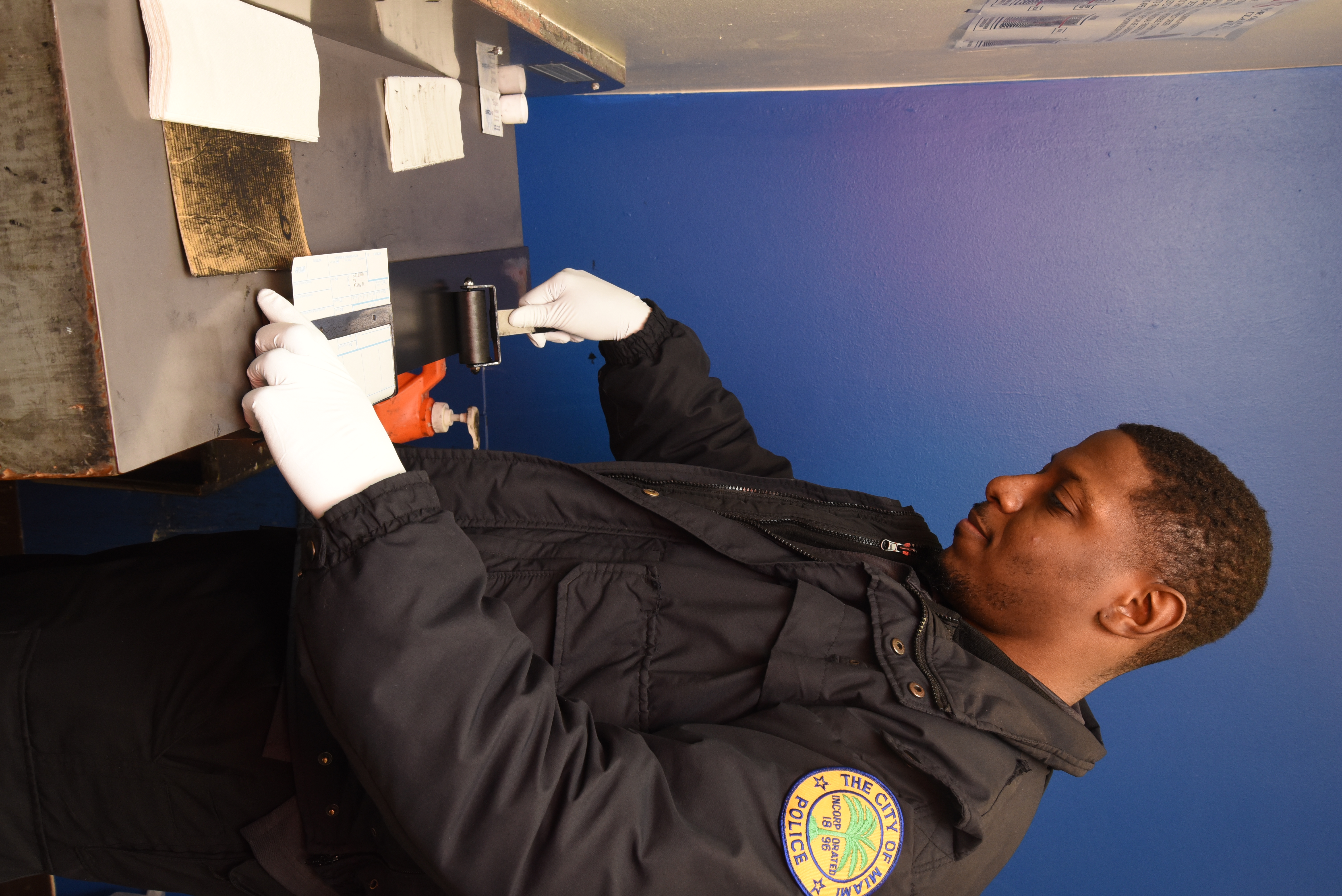
This detail is responsible for fingerprinting City employees, the general public and issuing identification and access cards to all City of Miami employees.
The Employee Identification Detail was once responsible for issuing identification cards to the general public as well. During times of mass immigrations, the detail was tasked with photographing and fingerprinting the new arrivals so they could have valid identification in the United States. This function is now the responsibility of the State of Florida.
Related Web Sites
The International Association for Identification:www.theiai.org
Florida Division of the IAI:www.fdiai.org
Federal Bureau of Investigation:www.fbi.gov
American Academy of Forensic Sciences:www.aafs.org |